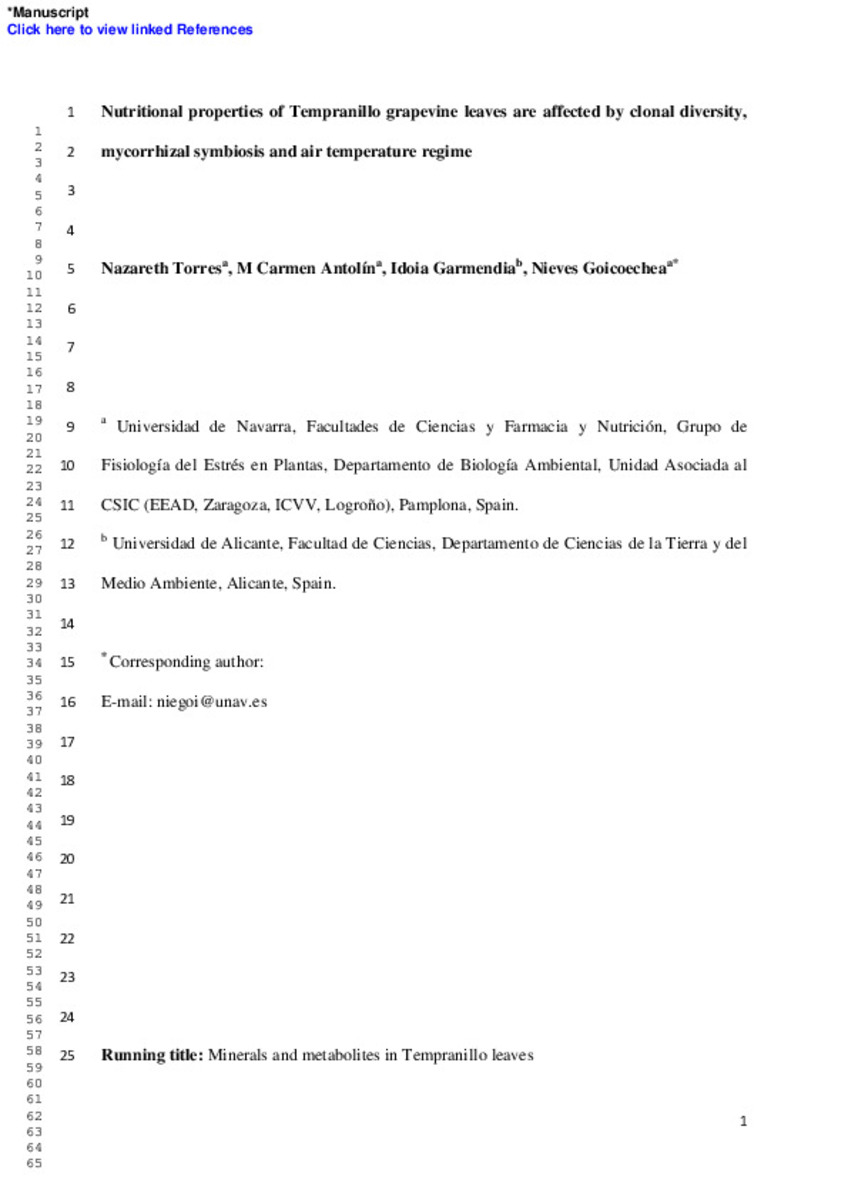Nutritional properties of Tempranillo grapevine leaves are affected by clonal diversity, mycorrhizal symbiosis and air temperature regime
Keywords:
Arbuscular mycorrhizal fungi
Global warming
Minerals
Phenolic compounds
Pigments
Vitis vinifera cv. Tempranillo
Citation:
Torres N, Antolín MC, Garmendia I, Goicoechea N. Nutritional properties of Tempranillo grapevine leaves are affected by clonal diversity, mycorrhizal symbiosis and air temperature regime. Plant Physiol Biochem. 2018 Sep;130:542-554.
Statistics and impact
0 citas en

0 citas en

Items in Dadun are protected by copyright, with all rights reserved, unless otherwise indicated.











